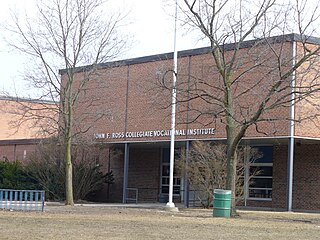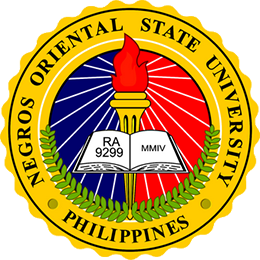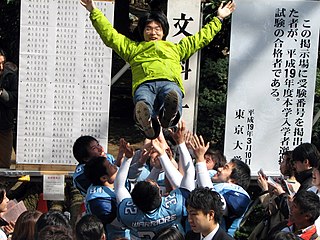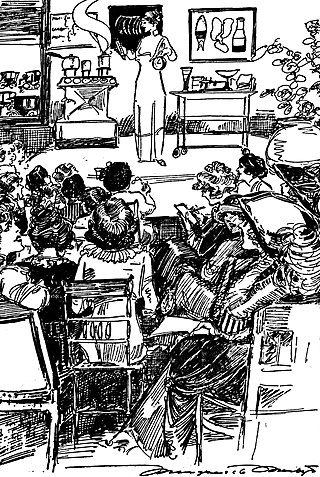
A college is an educational institution or a constituent part of one. A college may be a degree-awarding tertiary educational institution, a part of a collegiate or federal university, an institution offering vocational education, a further education institution, or a secondary school.

A community college is a type of undergraduate higher education institution, generally leading to an associate degree, certificate, or diploma. The term can have different meanings in different countries: many community colleges have an "open enrollment" for students who have graduated from high school. The term usually refers to a higher educational institution that provides workforce education and college transfer academic programs. Some institutions maintain athletic teams and dormitories similar to their university counterparts.

Vocational education is education that prepares people for a skilled craft as an artisan, trade as a tradesperson, or work as a technician. Vocational education can also be seen as that type of education given to an individual to prepare that individual to be gainfully employed or self employed with requisite skill. Vocational education is known by a variety of names, depending on the country concerned, including career and technical education, or acronyms such as TVET and TAFE.

A student is a person enrolled in a school or other educational institution.

A CEGEP is a publicly funded college providing technical, academic, vocational or a mix of programs; they are exclusive to the province of Quebec's education system. A loanword from French, it originates from the French acronym for collège d'enseignement général et professionnel, sometimes known in English as a "General and Vocational College"—it is now considered a word in itself.

Education in Canada is for the most part provided publicly, funded and overseen by federal, provincial, and local governments. Education is within provincial jurisdiction and the curriculum is overseen by the province. Education in Canada is generally divided into primary education, followed by secondary education and post-secondary. Education in both English and French is available in most places across Canada. Canada has a large number of universities, almost all of which are publicly funded. Established in 1663, Université Laval is the oldest post-secondary institution in Canada. The largest university is the University of Toronto with over 85,000 students. Four universities are regularly ranked among the top 100 world-wide, namely University of Toronto, University of British Columbia, McGill University, and McMaster University, with a total of 18 universities ranked in the top 500 worldwide.
Education in the United Kingdom is a devolved matter with each of the countries of the United Kingdom having separate systems under separate governments. The UK Government is responsible for England, whilst the Scottish Government, the Welsh Government and the Northern Ireland Executive are responsible for Scotland, Wales and Northern Ireland, respectively.
In Russia, the state provides most education services regulating education through the Ministry of Education and the Ministry of Science and Higher Education. Regional authorities regulate education within their jurisdictions within the prevailing framework of federal laws. Russia's expenditure on education has grown from 2.7% of the GDP in 2005 to 4.7% in 2018 but remains below the OECD average of 4.9%.

Negros Oriental State University is a public/state nonsectarian higher education institution in Dumaguete, Philippines. It was founded in 2004 by virtue of RA 9299. It is the only state university in the province of Negros Oriental, Philippines. Its Main Campus is located in Dumaguete and has the most number of academic programs and student organizations. It also has 6 satellite campuses all over the province. Formerly Central Visayas Polytechnic College, it was converted into a state university for students from Visayas and Mindanao.

The University of the Fraser Valley (UFV), formerly known as University College of the Fraser Valley and Fraser Valley College, is a Canadian public university with campuses in Abbotsford, Chilliwack, Mission and Hope, British Columbia. Founded in 1974 as Fraser Valley College, it was a response to the need for expanded vocational training in the communities of the Fraser Valley. In 1988, it became a university college, with degree-granting status. As the University College of the Fraser Valley, it grew rapidly, becoming one of the largest university colleges in Canada.

Education in South Korea is provided by both public schools and private schools. Both types of schools receive funding from the government, although the amount that the private schools receive is less than the amount of the state schools.

Higher education in Japan is provided at universities, junior colleges, colleges of technology and special training schools and community colleges. Of these four types of institutions, only universities and junior colleges are strictly considered postsecondary education providers. The modern Japanese higher education system has undergone numerous changes since the Meiji period and was largely modeled after Western countries such as Britain, France, Germany, and the United States of America combined with traditional Japanese pedagogical elements to create a unique Japanese model to serve its national needs. The Japanese higher education system differs from higher education in most other countries in many significant ways. Key differences include the method of acceptance, which relies almost entirely on one or two tests, as opposed to the usage of GPAs or percentages or other methods of assessment and evaluation of prospective applicants used in countries throughout the Western world. As students only have one chance to take this test each year, there is an enormous amount of pressure to perform well on it, as the majority of the time during a student's senior high school years is dedicated to performing well on this single test. Japanese high school students are faced with immense pressure to succeed academically from their parents, extended family members, teachers, guidance counselors, peers, and society at large. This mindset is largely based on a result of a traditional society that has historically placed an enormous amount of importance on the encouragement of study on top of the merits of scholarship and benefits of pursuing higher education, especially in an education system that places all of its weight upon a single examination that has significant life-long consequences on one's eventual socioeconomic status, promising marriage prospects, entrance into a prestigiously elite white-collar occupation, and a respectable professional career path.
Education in Norway is mandatory for all children aged from 6 to 16. Schools are typically divided into two divisions: primary and lower secondary schooling. The majority of schools in Norway are municipal, where local governments fund and manage administration. Primary and lower secondary schools are available free of charge for all Norwegian citizens as a given right.

A vocational university or university of applied sciences (UAS), less commonly called a polytechnic university is an institution of higher education and increasingly research that provides applied professional education and grants academic degrees. It should not be confused with vocational schools or technical schools that do not meet the strict standards of higher education nor have the ability to grant officially accredited academic degrees.

The Eulogio "Amang" Rodriguez Institute of Science and Technology is a public college in Santa Mesa, Manila in the Philippines. It was named after Eulogio Rodriguez, one of the longest serving senators in the country.
Education in Uzbekistan is generally managed by the Ministry of Kindergartens and Schools and Ministry of Higher Education, Science and Innovations with some other agencies and bodies responsible in certain areas as prescribed by the President of Uzbekistan.

Higher education in Canada includes provincial, territorial, indigenous and military higher education systems. The ideal objective of Canadian higher education is to offer every Canadian the opportunity to acquire the skills and knowledge necessary to realize their utmost potential. It aspires to cultivate a world-class workforce, enhance the employment rate of Canadians, and safeguard Canada's enduring prosperity. Higher education programs are intricately designed with the perspective of the learner in focus, striving to mitigate risks and assure definite outcomes.

Vocational education in the United States varies from state to state. Vocational schools or tech schools are post-secondary schools that teach the skills necessary to help students acquire jobs in specific industries. The majority of postsecondary career education is provided by proprietary (privately-owned) career institutions. About 30 percent of all credentials in teaching are provided by two-year community colleges, which also offer courses transferable to four-year universities. Other programs are offered through military teaching or government-operated adult education centers.

In Canadian English, the term college usually refers to a career college, technical, trades, community college, college of applied arts or applied technology, or an applied science school. These are post-secondary institutions granting apprenticeships, citations, certificates, diplomas, and associate's degrees.
In the Canadian province of Quebec, college education is the level immediately after high school. It encompasses a range of technical, academic, and vocational education, including some specialized programs. The Quebec education system is unique in North America.























